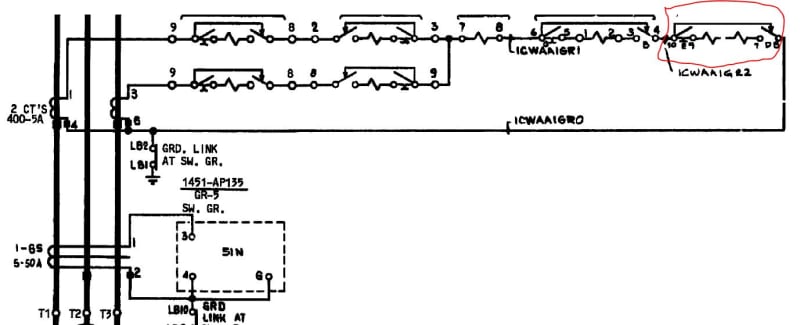SaraXelon
Electrical
- May 19, 2022
- 12
We have 2 CTs (A and C phase) on the 3-ph motor circuit and the CTs are wired as follows:
1) 2 CTs feed motor protection relays followed by the summated CT (2 CT currents summed before) feeding the motor excitation panel.
We are replacing the motor excitation panel that now requires 2 separate CT inputs. So we have been planning to revise the CT circuit as follows:
2a) 2 CTs feed motor excitation panel (add 1200 ft round trip) followed by the motor protection relays
2b) Alternatively, the 2 CTs can feed the motor protection relays first followed by the motor excitation panel (placement of the panel is reverse of option 2a)
Preliminary calculation shows that the increased CT burden is acceptable. What would be your recommendation 2a or 2b? For option 2a, would this have any negative impact to motor protection?
Thanks for your input.
1) 2 CTs feed motor protection relays followed by the summated CT (2 CT currents summed before) feeding the motor excitation panel.
We are replacing the motor excitation panel that now requires 2 separate CT inputs. So we have been planning to revise the CT circuit as follows:
2a) 2 CTs feed motor excitation panel (add 1200 ft round trip) followed by the motor protection relays
2b) Alternatively, the 2 CTs can feed the motor protection relays first followed by the motor excitation panel (placement of the panel is reverse of option 2a)
Preliminary calculation shows that the increased CT burden is acceptable. What would be your recommendation 2a or 2b? For option 2a, would this have any negative impact to motor protection?
Thanks for your input.

